Write your own definition of a system.
A system is a set of parts that function together as a whole.
Chapter overview
1 week
This chapter revises some of the concepts covered in Gr. 6 Energy and Change on the supply of electricity. The learners should already have a basic knowledge of the national grid and this chapter will expand on those ideas, and discuss how the national grid is a system to supply electricity. This chapter also introduces the concept of a dynamo and the role that Eskom plays in producing electricity. Learners will be given an opportunity to research different careers in the field of energy production.
If you only teach Natural Sciences, it is a good idea to check with the Technology teachers to see how these two curriculums complement each other, especially with regard to electricity. Some of the concepts which might be introduced for the first time in Natural Sciences, have already been covered in the Technology curriculum. Knowing what learners have already covered and been introduced to will help make your classes more efficient and more stimulating for learners.
1.1 Energy transfers in the national grid (2 hours)
Tasks | Skills | Recommendation |
Activity: Overview of the national electricity grid | Accessing and recalling information, defining and describing, comparing, identifying | CAPS suggested |
Activity: Turning a pinwheel | Making, observing, describing | Suggested |
Activity: Energy transfers | Accessing and recalling information, interpreting, sorting and classifying, communicating information graphically | CAPS suggested |
1.2 Conserving electricity in the home (1 hour)
Tasks | Skills | Recommendation |
Activity: Geyser blankets and solar geysers | Accessing and recalling, explaining | Suggested |
Activity: Conserving electricity | Sorting and classifying, problem-solving, describing | CAPS suggested |
Activity: Writing a letter to your local newspaper | Accessing and recalling information, research, communicating in written form, identifying problems and issues, raising questions, problem-solving | Optional |
Activity: Career research | Research, raising questions, | Optional |
Do you remember learning about the mains electricity supply in Gr. 6 Energy and Change? We learned that the electricity that is used to power our homes, schools, shops and other buildings is generated in power stations and delivered to us in the national electricity grid. In this chapter we are going to be looking in more detail at how electricity is generated and delivered to the consumers.
Great video that provides a comprehensive overview of where energy comes from and how it is distributed via the national grid.
The visit box refers to an excellent video on the national grid and summarises where energy comes from, how it is harnessed, and how it is distributed. It links back to work covered in Gr. 5 and Gr. 6. It does, however, only refer to the national grid of the UK and USA. You could use this as an opportunity to discuss the South African national grid in contrast to international electricity grids and supply systems.
Let's look at the different parts of the national electricity grid.
The following is a diagram of the national electricity grid. This gives you an overview of the process and different steps that we will be discussing.
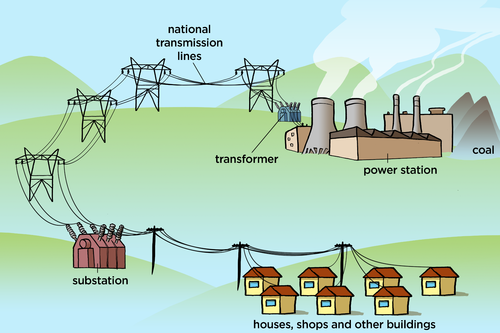
QUESTIONS:
Some of the questions here link back to what was covered in the earlier chapters this term, which serves to revise concepts and also create connections between concepts. This reinforces learning.
In the simple circuit, the circuit is completed as the wire goes from the bulb back to the battery. We cannot see this in the national electricity grid, but there are also power lines which connect back to the station to complete the circuit.
Write your own definition of a system.
A system is a set of parts that function together as a whole.
What does the Law of Conservation of energy tell us about the energy in a system?
The energy is conserved in a system, it is neither created nor destroyed.
Look at the diagram of the national electricity grid. Do you think it is a system? Why?
Yes, it is a system as it is made up of different parts, such as the power station, transmission lines, buildings, which function together to generate and deliver electricity.
The national electricity grid is actually a big electrical circuit. Look at the following diagram of a simple electric circuit that you might have made in class and the diagram of the national grid. We can draw similarities between this circuit and the national electricity grid to understand it.
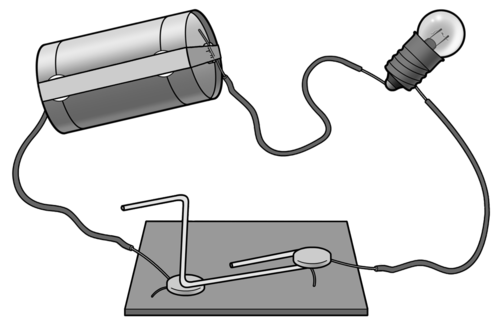
The battery is the source of potential energy in the simple circuit. What generates electricity in the national electricity grid?
The power station.
In the simple circuit, the conducting wires transmit the electricity in the circuit. What does this job in the national electricity grid?
The transmission power lines.
In the simple circuit, the useful output energy is to make the light bulb light up. What are some of the useful outputs in the buildings where the electricity is delivered to in the national electricity grid.
There are many useful outputs, such as lights in houses, schools, heaters, warming water in geysers, running any appliances or tools, etc.
In Chapter 1 of this term, we discussed sources of energy. What is the source of energy for the power station in the diagram?
Coal.
Is this a renewable or non-renewable energy source? Why?
It is non-renewable as there is only a limited amount of coal on Earth. It is not being regenerated at a fast enough rate for it to be renewable.
We can divide the national electricity grid up into 4 main stages. These are:
A: Generation (this is where electricity is generated)
B: Transmission (the electricity enters the power lines of the national grids and is transmitted)
C: Distribution (the electricity is distributed at substations to various towns and areas)
D: Consumers (this is where the electricity is transferred to useful energy outputs)
Use this information to write the letters A, B, C and D on the diagram of the national electricity grid to label these stages.
The learners should write the letters in the approximate places as shown below:
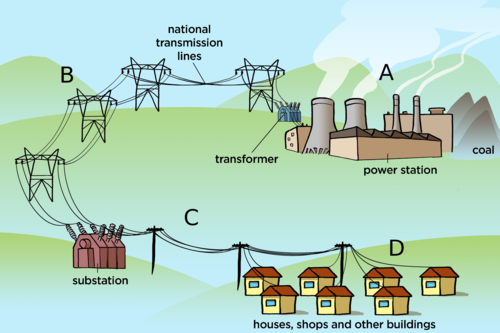
Let's now take a closer look at the first stage in the national electricity grid, namely how electricity is generated.
Do you remember that in Chapter 2 we looked at another renewable way that electricity is generated using a hydropower plant. The water in the dam was used to turn the turbine to generate electricity. What energy did the water have when it was at the top in the dam?
Potential energy.
What was this energy transferred to as the water fell and turned the turbine?
It is transferred to kinetic energy.
In South Africa most of the power stations use coal for fuel. We are therefore going to learn more about how coal-powered power stations work. The coal is mined out of the earth. The coal is transported to the power station in large trucks or trains.
We will learn about how coal is formed next term in Planet Earth and Beyond.
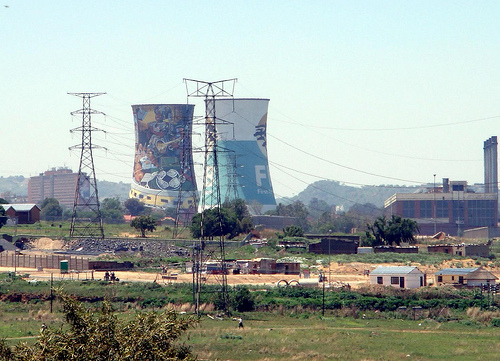
The cooling tower on the left in the photo is covered in the largest mural painting in South Africa.
Let's take a closer look at what happens inside a power station. Have a look at the following diagram.
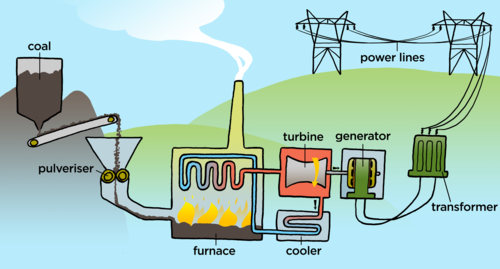
The large chunks of coal are first crushed into a fine powder. This is called pulverisation.
The coal is then transported to a furnace where it is burnt.
The thermal energy from the burning coal is used to boil water and generate steam.
The steam pushes the blades of the turbine and so the turbine spins.
The turbine is connected to the shaft of the generator which then turns large magnets within wire coils, which generates electricity.
The electric current is sent through the power lines to businesses and homes.
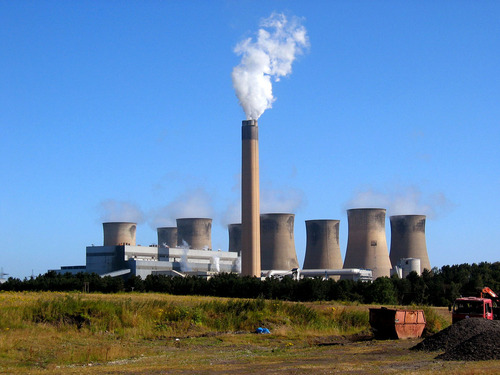
Now that we know the basic process for producing electricity, let's look more closely at how energy is transferred from one part to another in the system.
In a coal-powered power station, the potential energy stored in the coal is used to boil water to produce steam.
The thermal energy in the steam is transferred to a turbine. This allows the turbine to turn which means that the turbine now has kinetic energy. Can you see how energy is transferred from a thermal system to a mechanical system?
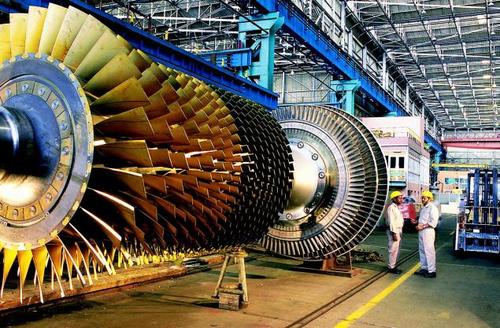
How does the steam make the turbine turn? Let's make a simple turbine (pinwheel) and see how it works.
If you do not have enough time in class to have each learner make their own pinwheel then either make a few before class that the learners can use or just make one to use as a demonstration. You may also be able to purchase small pinwheels to save class time.
Some kettles may produce a weaker stream of steam and so it would be a good idea to test the kettle with a paper pinwheel before doing it with the class. You can also watch the video provided in the Visit box.
If the pin wheel which is made using the A5 paper is too large to turn in the steam from a kettle, then redo the activity using a smaller piece of paper. Starting with a smaller piece of paper will result in a smaller pinwheel. Take note that the commercial pinwheels made from plastic often curl and melt in the steam.
How to make a pinwheel (video)
MATERIALS:
INSTRUCTIONS:
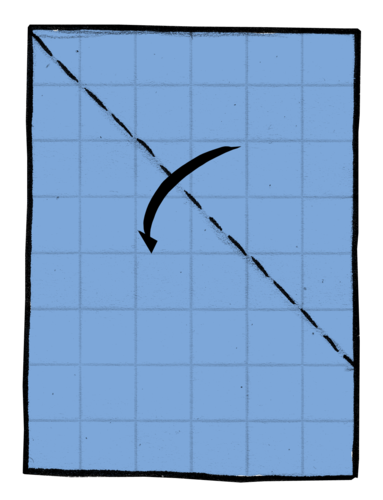

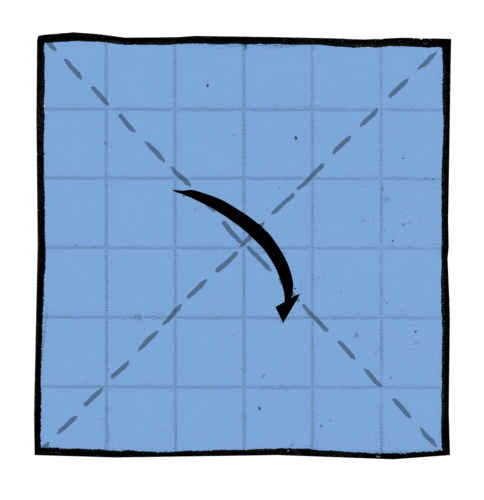
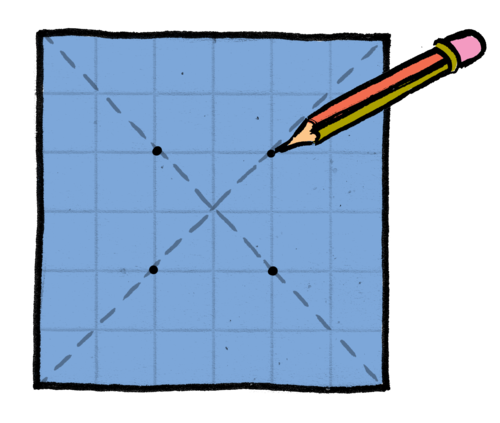
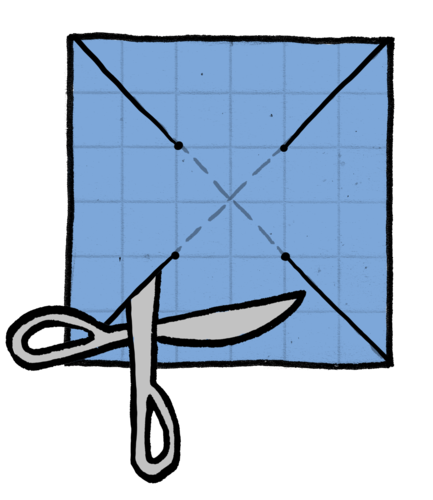
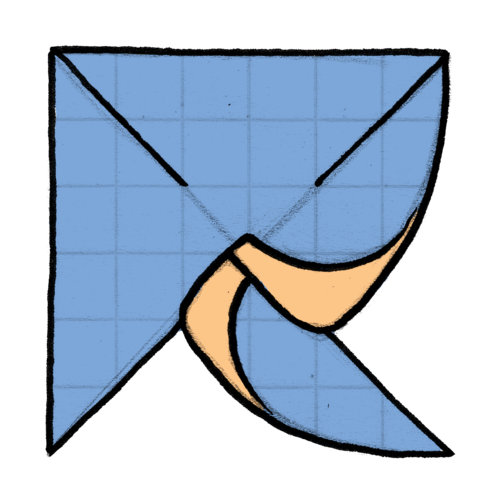
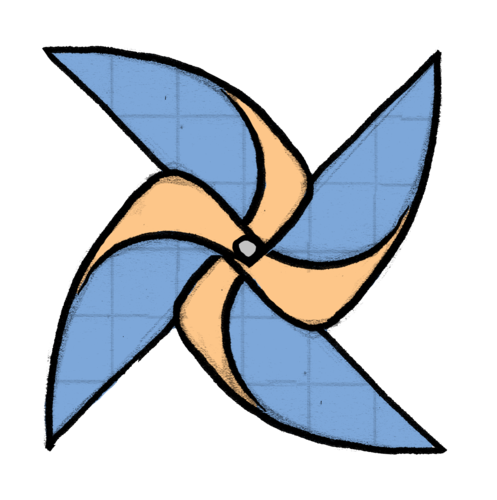

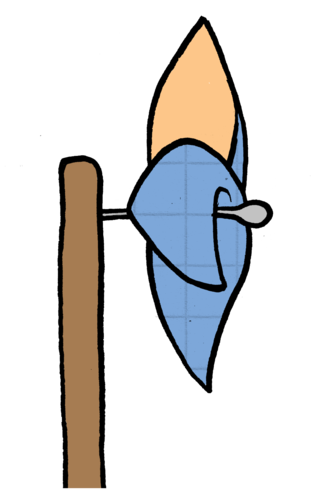
Make sure to point out the thermal system (the kettle and boiling water) and the mechanical system (the turning pinwheel) and how energy is transferred between these systems.
We have mostly looked at coal-powered power stations, but other energy sources, such as hydropower or nuclear power, can also be used to transfer energy to the turbine.
QUESTIONS:
What happened to the pinwheel when it was held in the steam from the boiling kettle?
The pinwheel turned when it was placed in the steam.
Why did the pinwheel turn? Explain the energy transfers which are taking place.
The element in the kettle transfers energy to the water in the kettle. The water then gets to boiling point and changes phase to water vapour. The steam rises because of convection. The moving particles push against the blades of the pinwheel and cause the pinwheel to turn. The steam has a lot of kinetic energy which is transferred to the blades of the pinwheel causing it to turn. There is a transfer of energy between a thermal system and a mechanical system.
The turning turbine is attached to the axle of a generator. The turning turbine turns the generator. So the turbine transfers its kinetic energy to the generator.
A generator consists of a very large solenoid with a large rotating magnet. The solenoid is made up of thousands of coils of conducting wire. When the magnet is turned inside the coil, the generator produces electricity. The electricity is then sent to our homes through the national grid power lines. We use the energy in our homes to make our appliances work.
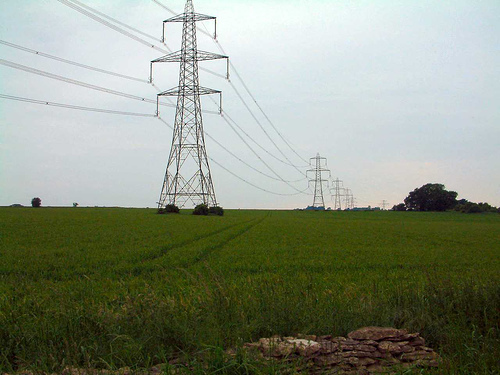
We will learn more about electromagnets next year in Gr. 8.
How a coal power station works (video)
If possible, organise an excursion with your learners to a power station in your area. Here is a link to the Wikipedia article which lists all the power stations in South Africa. http://en.wikipedia.org/wiki/List_of_power_stations_in_South_Africa
Here is a table summarizing some of the various power stations in South Africa and and which province they are located in, for your reference.
Coal-powered stations
Power station | Province |
Arnot Power Station | Mpumalanga |
Bloemfontein Power Station | Free State |
Camden Power Station | Mpumalanga |
Duvha Power Station | Mpumalanga |
Kelvin Power Station | Gauteng |
Lethabo Power Station | Free State |
Matimba Power Station | Limpopo |
Pretoria West Power Station | Gauteng |
Hydroelectric Power Stations
Power station | Province |
Drakensberg Pumped Storage Scheme | Free State |
Gariep Dam | Free State-Eastern Cape border |
Ingula Pumped Storage Scheme | KwaZulu-Natal |
Kouga Dam | Eastern Cape |
Palmiet Pumped Storage Scheme | Western Cape |
Steenbras Pumped Storage Scheme | Western Cape |
Vanderkloof Dam | Northern Cape |
The description of the production of electricity given in the text before this activity and the videos should give the learners enough information with which to draw a simple flow diagram showing how energy is transferred through the system, from the coal to the power lines.
INSTRUCTIONS:
This is an example of the type of flow diagram required. If learners are battling, start the diagram off with them by showing the first step and then they can complete it.

Take note that an electric generator is a device that converts mechanical energy into electrical energy, normally using electromagnetic induction. A dynamo was actually the precursor to the modern day electric generators. now, it can be considered as a type of generator that produces direct current, with the use of commutators. At this level though in Gr. 7, we are not explaining the difference between direct and alternating current. Generators are used all over the world now, and dynamos are considered to be an instrument of the past, however, they are still used in some instances where a low powered DC current is required, such as a bicycle light, as discussed here. Make sure that learners do not use the words generator and dynamo interchangeably as a dynamo is a type of generator, but it is incorrect to call a generator a dynamo.
Eskom produces electricity by using large generators but we can produce electricity on a smaller scale using a dynamo. A dynamo is a type of generator and they are considered to be the device that came before and led to the development of the modern day electrical generators that are used now all over the world. However, dynamos are still used in some places where a low current is needed.
A dynamo is a type of generator, but a generator is not necessarily a dynamo.
A bicycle light is powered by a small dynamo. A bicycle dynamo has a small magnet which is turned inside a metal coil. The magnet is turned by the motion of the bicycle wheel.
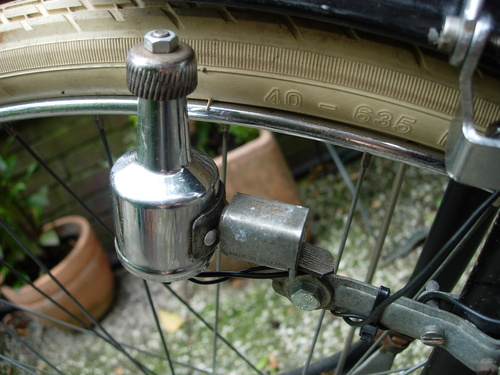
Do you see the cog which turns at the top as the wheel goes around? This turns the magnet enclosed in the dynamo. Explain the transfer of energy in this system.
The movement (kinetic energy) of the wheel is transferred to electrical energy.
What is the advantage of having a dynamo on the bicycle, rather than a battery for example?
The dynamo is used to generate electricity to power a light for the bicycle. This is useful as a battery will only last for a certain amount of time and run out. But, a dynamo will work whenever you are cycling as it just needs the movement of the wheel.
Dynamos are also used in mining helmets and wind-up torches and radios. If a miner's light on his helmet goes out, he can just wind up the dynamo again to generate electricity for the light. This is very useful when miners are deep underground and they cannot afford to have no light. A battery-powered light has the risk of running out and there is no way to recharge it when underground.
Electricity is very expensive to produce and, in South Africa, we rely heavily on non-renewable sources of energy such as coal. The burning of fossil fuels releases greenhouse gases into the atmosphere, causing damage to our environment. We therefore need to conserve electricity.
In South Africa, electricity is produced by Eskom and sent to our homes through the wires of the national grid. Eskom charges us for the electricity we use. In order to save money and to preserve our environment we need to make sure that we use as little electricity as possible.
There are many ways to cut down on the amount of electricity we use in our homes. Simple things such as switching off lights when you leave a room or using extra blankets to keep warm rather than a heater. Air conditioners also use a lot of electricity so using them only when really necessary will also help to save electricity.
There are several common household appliances which use a lot of electricity. The element of an electric stove and ovens use a lot of electricity in order to stay hot enough to cook food. Electricity can be saved by making sure that the oven is switched off as soon as the food has been cooked.
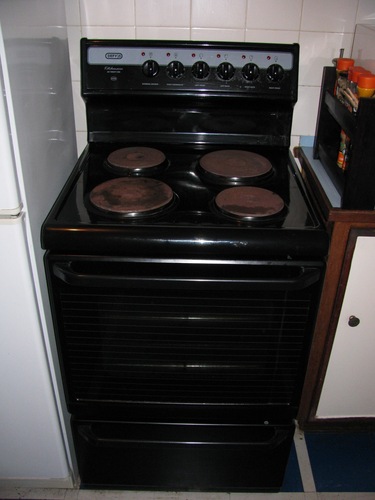
An electric stove usually has several different sizes of heating elements. In the photo there are two large plates and two smaller ones. It is important to use small pots on small elements and large pots on larger elements. Why do you think this is?
The part of the heating element which is not covered by the pot is transferring thermal energy to the air surrounding the element rather than to the pot and so a lot more energy is "wasted".
Any appliance that produces heat requires a lot of electricity. A geyser is an appliance which uses a lot of electricity. A geyser is a cylindrical tank which is used to warm and store hot water for people to use in their homes. It takes a lot of energy to warm the water and so a lot of electricity is needed. A lot of the energy transferred to the water is wasted because the air around the geyser gets warmed up as energy leaves the water and is transferred to the air. The geyser has to keep warming the water to keep the temperature constant.
One way to help reduce the energy loss to the surrounding air is to use a geyser blanket. Geyser blankets are usually between 50 mm and 150 mm thick and are often made from fibreglass and other insulating materials. They are covered with a reflective aluminium layer.
Solar geysers do not use electricity from the national grid for their energy needs. We have already learned about how they work.
QUESTIONS:
Use your knowledge of insulating materials to explain how a geyser blanket could help reduce energy loss from the water to the surroundings, and therefore conserve electricity.
The thick fibre layer helps to reduce the energy loss by slowing down the conduction of heat from the water to the air. The shiny aluminium layer is not a good emitter of radiation and so less energy is lost through radiation.
How does installing a solar geyser contribute to relieving demand placed on the national grid?
The solar panels generate the required electricity and so it isn't generated by Eskom. It is the electricity supplied by Eskom that needs to be conserved. This also reduces the demand on non-renewable energy sources which have a negative impact on the environment.
Let's look at some more ways to conserve electricity.
The Eskom website has several tips on how to conserve electricity. http://www.eskom.co.za/c/article/78/conserving-electricity/
INSTRUCTIONS:
Look at the grid below. If the instruction helps to SAVE electricity, colour it in BLUE. If the statement WASTES electricity, colour it in RED.
Turning off appliances when on holiday | Leaving lights on in an empty room | Using an electric blanket | Using fluorescent lights | Using filament lights |
Wearing jerseys and warm clothes in winter | Leaving outside lights on during the day | Using an electric toothbrush | Running full loads in the washing machine | Switching off the geyser during the day |
Boiling a full kettle | Using a gas heater | Hanging clothes outside to dry | Turning the TV off when no one is watching | Using a geyser blanket |
Running half loads in a dishwasher | Leaving the oven on when nothing is cooking | Using an electric can opener | Running an air conditioner with the windows open | Using a tumble dryer |
The blocks which learners should identify as energy wasting are listed below, with a suggestion for how it can be rewritten to be energy saving:
Leaving lights on in an empty room - Switch off lights in an empty room
Using an electric blanket - Use extra fabric blankets
Using filament lights - Use fluorescent lights
Leaving outside lights on during the day - Switch off outside lights during the day
Using an electric toothbrush - Use a non-electric toothbrush
Boiling a full kettle for one cup of tea - Only boil the amount of water that you intend using
Running half loads in a dishwasher - Only run the dishwasher when it is full
Leaving the oven on when nothing is cooking - Switch off the oven as soon as the food is cooked
Using an electric can opener - Use a non-electric can opener
Running an air conditioner with the windows open - Keep windows and doors closed when running an air conditioner
Using a tumble dryer - Rather hang washing than use a tumble dryer
QUESTIONS:
Make a list of the electrical appliances in your home. Walk through your home and make sure to count every item. What could you do, in your home, to help your family conserve electricity?
Learner-dependent answer.
Our country relies heavily on fossil fuels for our energy supply. Eskom power stations use coal, which is a non-renewable energy source. How can saving electricity in our homes help to reduce our negative impact on the environment?
This question links back to what learners covered in Chapter 1 on sources of energy. Burning fossil fuels releases greenhouse gases which contribute to the greenhouse effect in the atmosphere. This contributes to global warming. If we use electricity in our homes wisely and save electricity, we reduce the load on the coal-powered stations, and therefore help to reduce the emission of greenhouse gases.
What renewable energy alternatives could your family use in your house to reduce your use of electricity supplied by coal-powered stations through the national electricity grid?
Learners can suggest installing solar panels on the roofs of their house to rather make use of solar power as it is a renewable energy source. Electric geysers also use a huge amount of electricity to warm water, therefore installing a solar water heater (as discussed in Chapter 4), the family will reduce their load on the national supply system by rather using alternative energy sources.
This is an optional activity aimed at creating awareness amongst learners about our country's reliance on fossil fuels and the negative environmental impact. This can also be done as a homework task.
Learners will need to write a letter to their local newspaper. Encourage learners to do some extra research about the area in which you live. For example, looking at the direct impacts of a coal station on your area, such as the possible effects of acid rain. Learners should research the renewable energy power stations that might already be in the area which could rather be expanded.
This is a creative writing piece but also a research task. Learners must reference any sources that they use. Learners must include in their letter, their motivation for why renewable energy sources should rather be explored. The scientific accuracy of their letters must also be assessed.
The purpose of this activity is to engage learners in constructive, problem-solving thinking.
You have just found out that there are plans to build a new coal-powered power station just outside your home town. Your local community is upset about this due to the effects of the pollution on the environment. Your community also feels that greater measures are needed to change the way we rely so heavily on non-renewable sources. We should rather be looking at alternative ways of generating electricity. You decide to do some research about the best possible solution for a power station, other than one which uses fossil fuels.
INSTRUCTIONS:
Learner-dependent answer.
Careers in electricity
There are many different careers in the field of electricity generation. Engineers, both mechanical and electrical, are needed to help design and run the processes of electricity generation. Technicians and artisans are needed to build and maintain the power generators. Research scientists are also needed to help test and develop new technologies.
INSTRUCTIONS:
Choose an electricity related career which you find interesting and research the career. You can do this by searching on the internet or in books. Some careers to find out about are those in the field of electricity generation, including engineers, scientists, artisans and technicians.
Learners can also make a poster about the career and put them up for display in the classroom.
You can also contact some the engineering associations listed below:
Engineering Council of South Africa (ECSA)
Tel: (011) 607-9500 Fax: (011) 622-9295
E-mail: engineer@ecsa.co.za
South African Institute of Electrical Engineers
Tel: (011) 487-3003/6 / (011) 487-3002
Electrical Contractors Association of SA
Tel: (011) 392 0000
What does a day in the life of this career involve?
Learner-dependent answer.
The Zooniverse website provides a great overview of the various citizen science projects that learners can get involved in. There is a huge variety of projects, from helping to identify possible planets around stars, analysing real life cancer data, looking at tropical cyclone data, or listening to the calls from whales or bats. And there are also many others. Citizen science is scientific research which is conducted in whole or in part by nonprofessional scientists, specifically the general public. Encouraging learners to get involved in some of these projects will open their eyes to the possibilities out there, and also add meaning and value to what they learn within the Natural Sciences classroom. https://www.zooniverse.org/
'Citizen science' is when the general public takes part in and conducts scientific research.
Want to take part in some real science research? Check out these citizen science projects to easily get involved. https://www.zooniverse.org/
Remember to discover more online by visitingwww.curious.org.za and by typing the links in the Visit margin boxes into your internet browser to watch any videos, play with simulations or read an interesting article.

Complete the concept map below by filling in some of the ways to save energy.
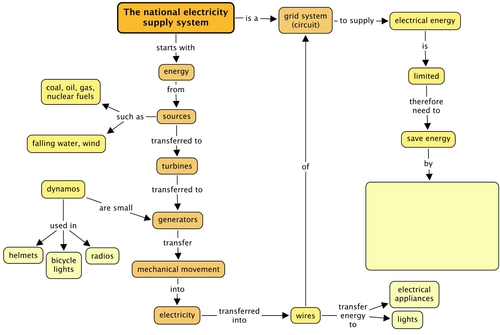
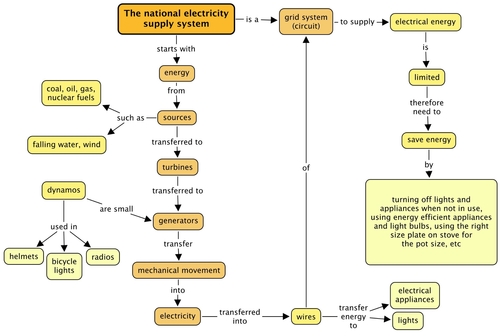
Why do you think we can refer to the national electricity supply as a grid? [2 marks]
This is because the power lines make up a grid across the country which is a closed circuit. It is a system.
What is the main source of energy for power stations in South Africa? [1 mark]
Coal.
What is Eskom? [1 mark]
Eskom is South Africa's public utility which produces the largest amount of electricity in South Africa.
Look at the diagram of a power station. Write a paragraph to describe the process by which electricity is produced in a coal power station. [7 marks]
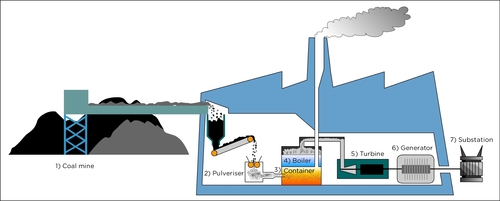
The paragraph must contain the following points:
We have mostly looked at coal power stations and how energy from coal is transferred to the turbine. What other energy sources can be used? [3 marks]
Any of the fossil fuels (natural gas and oil too), falling water in a hydropower plant, a wind turbine, or nuclear fuel.
The following graph shows the energy supply in South Africa from the various sources of energy. These percentages include the electricity production, consumption and export for each source in 2010. Answer the questions that follow.
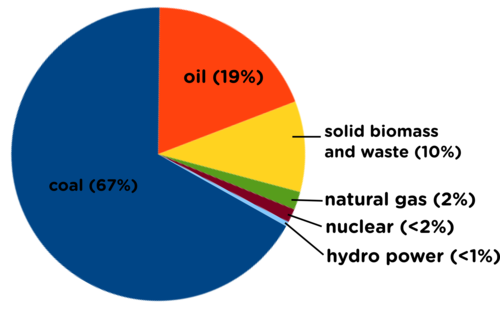
What type of graph is this? [1 mark]
What do all the percentages add up to in this type of graph? [1 mark]
What percentage of our energy supply comes from coal, as shown in 2010? [1 mark]
What percentage of our energy supply came from fossil fuels in total in 2010? [2 marks]
Does South Africa rely more on renewable or non-renewable energy supply? [1 mark]
What energy source is the smallest supply in South Africa, as in 2010? [1 mark]
What is the impact of our country's reliance on non-renewable energy sources? [3 marks]
A pie chart.
\(\text{100}\)%
\(\text{67}\)%
Learners must add up the percentages for coal, oil and natural gas which is 67 + 19 + 2 = \(\text{88}\)%
Non-renewable, as this makes up \(\text{88}\)% of our energy supply.
Hydropower.
Learners need to justify their answers. You should assess their reasoning and explanations of answers. Some points for answers in this question: Non-renewable energy sources are not sustainable in the long term as there is only a limited supply, they are not renewable. South Africa needs to think ahead to plan for when the supply of non-renewable energy sources runs out, by looking at alternative renewable solutions. The use of non-renewable energy sources has a negative impact on the environment due to the emission of greenhouse gases which contribute to global warming and acid rain which ruins crops and buildings.
Use the chart to draw a table showing this data in the space below. [6 marks]
An example of a table is given below. Learners must provide a heading for the table [1 mark] and column headings [1 mark each]. 2 marks are awarded to the correct data. 1 mark is for putting the percentage sign in the heading and not in each row.
Table showing the percentage breakdown for each source of energy supply in South Africa in 2010
Energy supply source | Percentage of energy supply in South Africa (\%) |
Coal | 67 |
Oil | 19 |
Solid biomass and waste | 10 |
Natural gas | 2 |
Nuclear | |
Hydro power |
Why does a miner need a dynamo instead of a battery for his helmet light? [2 marks]
Batteries run out quite quickly. Miners are underground for long periods of time and a dynamo does not run out of energy. The miner can just wind up the dynamo by hand again as soon as the electric light in the helmet begins to fade.
List 3 ways in which you could save electricity in your home. [3 marks]
Learner-dependent answer. Possible answers include: switching off appliances after use. Switch off lights of unoccupied rooms. Switch off geyser. Use a geyser blanket. Install solar geysers.
The following table shows the amount of energy used by some kitchen appliances in one hour.
Appliance | Kilojoules |
Coffee machine | 2 400 |
Electric stove | 10 800 |
Electrical frying pan | 4 500 |
Hot plate - large | 8 600 |
Hot plate - small | 4 600 |
Kettle | 6 800 |
Microwave oven | 4 400 |
Toaster | 3 600 |
Snackwich | 4 300 |
Food processor | 600 |
Use the table to draw a bar graph. [5 marks]
Which appliance uses the most electricity? [1 mark]
How could you conserve electricity by continuing to cook your food in another system, once it has warmed up? Hint: You might have made one of these in a previous activity! [1 mark]
Note: The bar graph should have a heading [1 mark] which indicates what the bar graph represents. An example heading could be "Amount of energy used by common household appliances in one hour.". The type of appliance should be listed on the horizontal x-axis [1 mark]. The number of kilojoules should be plotted on the vertical y-axis [1 mark]. The height of each bar should be correct according to the scale of the vertical axis [1 mark]. There should be gaps between the bars of the graph [1 mark].
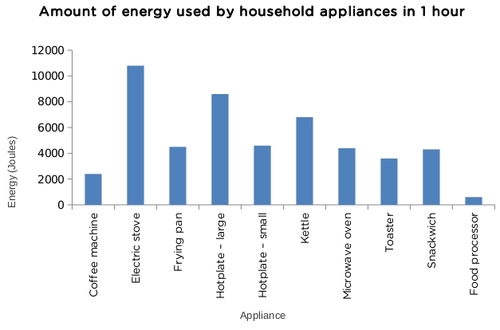
The electric stove.
Use a hot box to continue cooking the food once it has warmed up.
Total [42 marks]